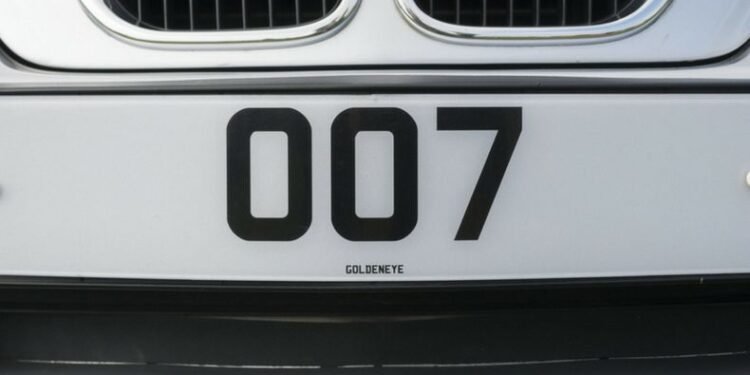Whether you are an expat or a UK native, getting a registration plate from the DVLA can feel like an overwhelming process. Many people in the country simply have theirs issued at random by the DVLA and never give it a second thought, but if you want something specific, there are equally specific rules you will have to follow.
Contents
- 1 Rules for DVLA Number Plates
- 1.1 Related posts
- 1.2 What Are the Most Reliable Car Brands in 2025
- 1.3 Key Factors to Consider When Choosing a Vehicle
- 1.4 Must-try the Mexican Food in a Sydney Shopping Centre
- 1.5 How Can Feelingirl Tummy Shapewear Help You Achieve Your Dream Physique?
- 1.6 10 Things Before Shopping for Handmade Wooden Beds
- 1.7 Why Olive Oil is the Star Ingredient in Luxury Gift Hampers
- 1.8 What Are the Key Features of a Durable Duffel Bag?
- 2 What Can Be Written on DVLA Number Plates?
- 3 What About Font?
- 4 Can You Purchase and Use Custom DVLA Number Plates?
Rules for DVLA Number Plates
There are a few rules to keep in mind when it comes to your DVLA plate. These come down to following legal guidelines that ensure your safety, the safety of those around you, and the ability of police and first responders to quickly identify your vehicle.
- Visibility. Your plate must be visible to other drivers. It must also be visible to law enforcement, including the automatic detection software now used in monitoring traffic areas and issuing citations.
- Plate positioning. You should have one plate on the front of your vehicle and one on the rear, each clearly visible and securely mounted. They should not be covered by anything that obscures them, such as a film or plastic covering or tint.
- Plate size. The size of your plate will depend on the size of your vehicle. A motorbike will have a much smaller plate than a standard vehicle, while large delivery vehicles will have bigger plates. Choosing the wrong plate size can hinder visibility.
- Legal markings. The plate should include the name of the plate supplier, which must be registered with the DVLA. Additionally, the plate must include a British Standard number, which certifies that the plate has been manufactured to legal standards.
What Can Be Written on DVLA Number Plates?
The combination of letters and numbers on standard-issue DVLA plates is randomly generated, but that does not mean it is actually random.
As of 2001, the modern DVLA registration format consists of two letters, two numbers, and three additional letters.
- The first two letters represent the local DVLA office where the vehicle was registered.
- The two numbers indicate the year of registration.
- The final three letters are random.
Plate number and letter combinations that do not follow these guidelines are prohibited without special circumstance. Drivers may not have special characters – such as pictures or emojis – added to their plates either. Some of these rules have been modified in some areas, especially in the post-Brexit era, so be sure to check with your local DVLA to learn more.
What About Font?
Yes, even the font used on DVLA number plates has regulations. Again, this is a matter of visibility. Ensuring that your plates are visible means using the right size and colour of lettering and numbering to make the characters pop – even in the foggiest conditions.
First, let’s talk about colour.
- Front plates must have a white background with black alphanumeric characters.
- Rear plates must have a yellow background with black alphanumeric characters.
Next, the font itself. The currently accepted typeface for number plates is called “Charles Wright” and is chosen for its ease of legibility to both the human eye and the machinery that is used to detect number plates on today’s roads. The standard size of this font on plates is 79mm tall and 50mm wide, with exceptions for the number “1” and the letter “I”.
Can You Purchase and Use Custom DVLA Number Plates?
All these rules might be frustrating for a person who likes to use things like their vehicle to express their personal style but fear not! It is legal to purchase and use custom DVLA number plates. These plates can be bought directly from the DVLA in a sale or auction, purchased directly from a private seller, or secured through a third-party seller.
Regardless of how you buy them, it is important to ensure that your plates still follow these guidelines so you can legally use them on the road:
- Format. There are three established formats that your custom plate must fit within – current, prefix, or suffix styles – and a plate that looks entirely different from these permitted styles will not be legal for road use.
- Age identifiers. While it is legal to not use an age identifier in your custom number plate, you cannot choose a fake age identifier to give your vehicle the appearance of being newer than it is. This is not only deceptive should you choose to sell the vehicle, but it can also make identifying your car harder for law enforcement and first responders.
- Reserved words and combinations. Some words and phrases are not permitted for use by the average UK citizen on DVLA plates. These words or phrases may be restricted due to being offensive or crude, or may be associated with companies, royalty, or the government in ways that are not legal to use without proper licensing.
Staying within the law when it comes to your DVLA plate is possible, even with a custom plate – and even in the face of the United Kingdom’s many rules! If you still have questions, feel free to ask your local DVLA representative. They can help you make sense of these laws and find the perfect plate for your needs!
Also Read This – UK’s Competition Authority Approves $3.32 Billion Barratt-Redrow Deal


















